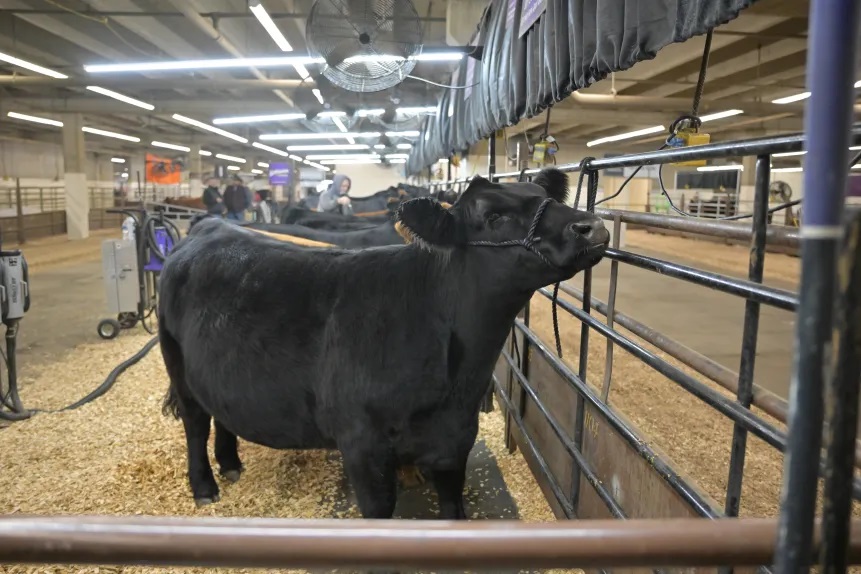
An unidentified employee of a dairy in northeast Colorado is the fifth person in the U.S. with a confirmed infection of the highly pathogenic avian influenza, but he only had mild symptoms.
The person, an adult man who had direct access to infected cattle, developed conjunctivitis, or pink eye, after exposure to infected cows, the Colorado Department of Public Health and Environment said Wednesday.
He took an antiviral medication as a precaution and has recovered.
State officials haven’t released any other details, including the name of the farm he works at or its location, how the avian flu virus may have hopped from cows to the employee, or whether authorities tested other people who lived or worked with the man.
The first person who tested positive for highly pathogenic H5N1 avian flu in the United States was a poultry worker in western Colorado in 2022. One dairy worker in Texas and two in Michigan contracted the virus this spring as part of the current multi-state outbreak linked to dairy cows. All four cases were mild. (The virus got its name because it causes a high death rate among poultry.)
Normally, H5N1 circulates in wild birds, sometimes spilling over into chickens and other domesticated poultry. At some point in December or January, the virus made the leap to dairy cattle, and the current outbreak has since spread to herds in at least 12 states, including Colorado. Since testing is largely voluntary, no one can be certain if the virus has reached any other states.
The virus seems to generally cause mild symptoms in cattle, but has proven deadly in domestic cats and some wild mammals. Right now, it isn’t well-adapted to spread from person to person, but every time it infects someone, it gets another roll of the dice to pick up mutations that would allow it to get established in humans.
State epidemiologist Dr. Rachel Herlihy said people who don’t interact closely with cattle or birds are at low risk. To protect themselves, people shouldn’t touch sick or dead animals, and if they have to, they should wear gloves, goggles and an N95 mask, and they should wash their hands afterward.
The department also advised against drinking raw milk. Pasteurized milk and fully cooked beef and chicken are safe.
The Colorado Department of Agriculture reported 25 cattle herds in the state have tested positive for H5N1 since April, with 21 still under quarantine. The U.S. Department of Agriculture has a slightly different count, showing 27 herds affected in Colorado since the outbreak began.
If the USDA’s numbers reflect the true situation, Colorado would have the second-highest number of infected herds, behind Idaho, despite not being a top dairy-producing state. Testing is only required when moving herds across state lines, however, so no one knows how many infected herds have gone unrecorded around the country.
If you work with animals that may be infected and develop flu-like symptoms or eye inflammation, call the state health department at 303-692-2700 to arrange for testing and medication, if needed.
You can now read the most important #news on #eDairyNews #Whatsapp channels!!!
🇺🇸 eDairy News INGLÊS: https://whatsapp.com/channel/0029VaKsjzGDTkJyIN6hcP1K























